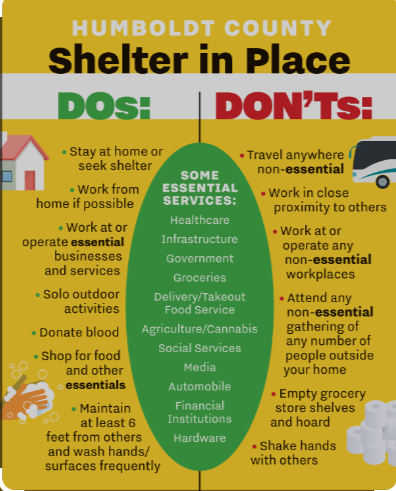Shelter-in-Place
A Shelter-in-Place kit is a kit that allows you to seal off a building, room, or vehicle to make it as airtight as possible. This kit can greatly increase your survivability against chemical, biological, and radiological exposure. The kit itself doesn’t have to be anything fancy and is very simple to put together.
It is sometimes confused with designated disaster shelters and the kits that accompany those. Shelter-in-place is an emergency warning that authorities will give in the event of a chemical or radiological emergency in specific areas.
Shelter-in-Place Kit Contents
Roll of Duct Tape – Duct tape is great, and you probably already have some lying around. Chances are, you might not have enough. To seal one room, you will need at least one 30-yard roll. When used properly, these kits use a lot of tape and plastic sheeting.
Plastic Sheeting – You can get 4-6 mil sheeting of any color, but I prefer 4 mil since you can contour it to odd-sized doors, windows, and vents. I also prefer black sheeting since it can double as a resource to cover windows for light discipline. The 10-foot wide sheeting we suggest may seem like overkill, but it is always better to cut plastic down to cover an opening than to seam it together with duct tape- there is almost always a hole!
How to Shelter-in-Place
The shelter-in-place kit is used for three types of scenarios: chemical, biological, or radiological events. These events usually come with a warning, and possibly even a message to shelter in place. Even with a warning, being able to shelter in place quickly is the most important part of the entire plan. While a radiological event could take hours to contaminate, a chemical release would usually only give you minutes to become airtight. Follow the following steps, in order:
- Close and lock all windows and doors. Leaving any of these open would just be unwise.
- Shut off your HVAC system. Do not pull any air in from the outside.
- Shut off any fans. Quit circulating air within your home.
- Go to your designated Shelter in Place room. It should be on the top story of your home and towards the center. The higher the room, the better since chemicals and other contaminants are heavier than air and tend to settle in clouds at ground level.
- Cut plastic to cover your doors and windows in this room. Some people choose to pre-cut plastic to the size of their doors and windows to save time at this step. I don’t suggest this, however, since that may affect your plans if you have to switch Shelter in Place rooms for any reason.
- Tape the plastic to the frames to create airtight barriers. Use plenty of duct tape on areas where you are not sure it has been sealed- better safe than sorry.
- Cut plastic and tape over any air intake or exhaust inside the room.
- Turn on the radio and stay informed on when conditions are safe for you to evacuate.
Here is the corniest video we could find about it that is still accurate:
https://www.youtube.com/watch?v=xjpoh7lGqLg&t=5s
Why You Need a Shelter-in-Place Kit
Evaluate the threats that apply to your area. Do you live close to military bases (attacks), industrial areas (chemical accidents), or a nuclear power plant? (radiological contamination) If you perceive any threat that would include a chemical, biological, or radiological hazard, you need to put together a Shelter in Place Kit.
The kit is very easy to put together- the plan is much harder to execute quickly. In a life-or-death situation, you may be surprised at how hard it is to cut and apply plastic to windows and doors. Practice can make perfect, so a dry run is never a bad idea.
Keep your kit in your designated shelter-in-place room to save a little more time and to know where it is. Let your family in on the plan, so they know what to do as well. Some believe the kit is not worth it because you will “suffocate to death”.
Why You Need a Shelter-in-Place Kit
Evaluate the threats that apply to your area. Do you live close to military bases (attacks), industrial areas (chemical accidents), or a nuclear power plant? (radiological contamination) If you perceive any threat that would include a chemical, biological, or radiological hazard, you need to put together a Shelter in Place Kit.
The kit is very easy to put together- the plan is much harder to execute quickly. In a life-or-death situation, you may be surprised at how hard it is to cut and apply plastic to windows and doors. Practice can make perfect, so a dry run is never a bad idea.
Keep your kit in your designated shelter-in-place room to save a little more time and to know where it is. Let your family in on the plan, so they know what to do as well. Some believe the kit is not worth it because you will “suffocate to death”.
The Math on Why You Won’t Suffocate
A 12’ x 12’ x 12’ (pretty small) room is almost 50,000 liters of air. A person breaths about 10,000 liters of air per day- but doesn’t use all the oxygen they breathe– they exhale a good portion. This allows five people to survive at least a day, or one person to survive for at least five.
The Shelter-in-Place kit is designed to be used only for a few hours. Chemicals you can typically wait out, and radiological exposure forces you to evacuate eventually anyway- you are just sheltering for the duration Alpha and Beta particles are being emitted. Once those have settled, you will need to evacuate to avoid long-term gamma radiation exposure.
Vehicle Shelter-in-Place
Shelter-in-place in a vehicle is a different story. The steps to do this are simpler than a room- you turn off the AC/heater fan and close all the vents with duct tape. It is advised that you turn your car off, but in this situation, you really don’t have that much air.Staying mobile and continuing to evacuate may be a priority since you only have about 4 hours of air in your average car. You may have to make that judgment call.
Terms of Use:The information presented on the network is intended to expand personal knowledge and provide general understanding in a variety of fields to help you be active your Creative freedom and nurturing your health. The information presented here does not pretend to be and is not a substitute for medical instructions. Everything presented on the network is the personal opinion of the writers and any decision regarding your action or health choice is your sole responsibility. with regards For complete inner freedom.
Outhematrix (out the matrix) Network management.






